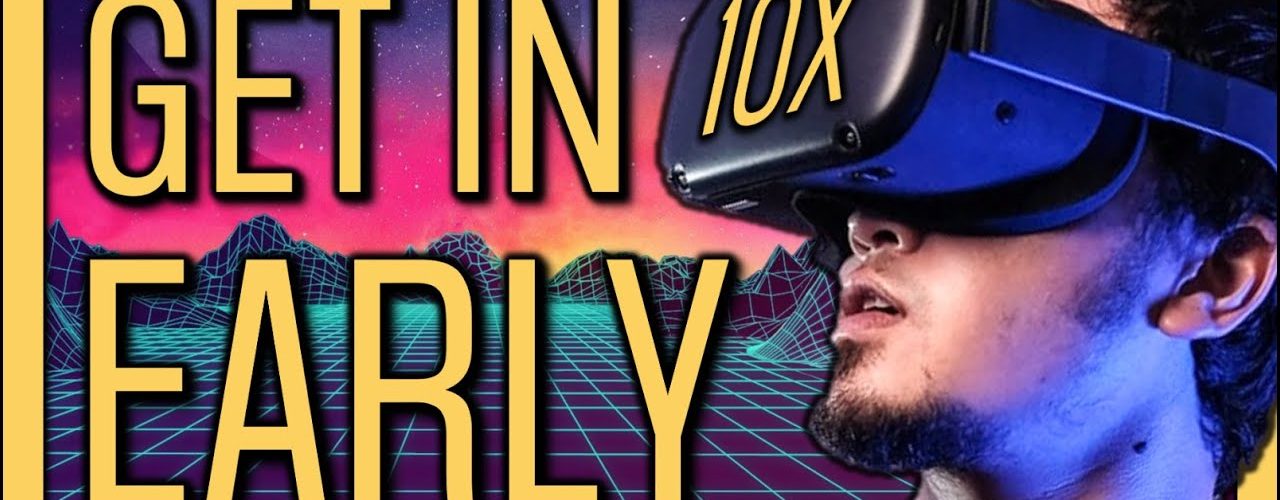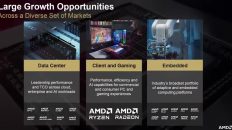Mentioned in Video:
- 🤯 Bigger Than Tesla? Top 10 Metaverse Stocks to Buy Now (Meta & FB Stock): https://www.youtube.com/watch?v=0G1b4gOsrRE
- 🏆 Members-Only: VR is Changing the World & How Vection Technologies is Disrupting Design: https://www.youtube.com/watch?v=22IkBRMZHSk
- @NVIDIA (NVDA Stock) GTC November 2021 Keynote with NVIDIA CEO Jensen Huang: https://www.youtube.com/watch?v=jhDiaUL_RaM
- @ThrillSeeker The BEST VR Headset in the WORLD – I CAN'T GO BACK! https://www.youtube.com/watch?v=NOk_M1Ib5F0
- @ThrillSeeker The BEST VR Headset in the WORLD just went CONSUMER https://www.youtube.com/watch?v=NC-puJQRVGI
- Facebook is planning to rebrand the company with a new name, @Meta: https://www.theverge.com/2021/10/19/22735612/facebook-change-company-name-metaverse
- ARK Invest's Big Ideas Report 2021: https://ark-invest.com/big-ideas-2021/
- Learn all about the Metaverse! https://www.matthewball.vc/the-metaverse-primer
- Support the channel and get extra member-only benefits by joining us on Patreon: https://www.patreon.com/tickersymbolyou
🤩 #Facebook, now #Meta, recently announced that they're rebranding to focus on the #Metaverse and that Facebook stock will become MVRS. I want to cover #VirtualReality now because this area of tech stocks is filled with some of the best stocks to buy now, even if you don't believe in Meta Platforms or even that Metaverse is going to take off. Virtual Reality was also featured in @ARK Invest‘s Big Ideas 2021 report, but only with respect to video games. I believe that VR extends far past gaming and that #ARKW, the #ARKInvest fund themed around the next generation of internet applications, is missing many of the best stocks as a result.
Video Transcript:
00:03
When you think about the Metaverse, you're probably thinking that it's in the distant
00:07
future, slowly being built by some of the biggest corporations in the world.
00:11
Trillion-dollar companies with secret underground labs, researching all the
00:15
different ways they can make money off the internet and the people using it. Or maybe
00:24
you think the whole Metaverse thing is just some sort of gimmick; a scheme put together by video
00:29
game companies and the entertainment industry to pump up sales of virtual reality headsets
00:34
and the low-budget experiences they run. This episode isn't about Facebook or Meta, and it's
00:40
definitely not about Mark Zuckerburg's idea of, uh, whatever this is. [Tiger and the Buffalo Art]
00:52
I want to show you a different side of virtual reality. In this episode,
00:56
I'll show you the current state of the art tech
00:58
and some of the publicly traded companies using it to make the world a better place today,
01:03
including some that ARK Invest doesn't hold, at least not yet. Your time is valuable,
01:09
so let's get right into it, starting with the actual state of the art and how it got here.
01:13
You're probably already familiar with virtual reality, or VR, which requires a headset
01:19
device to immerse you in a completely virtual setting. And you're probably also familiar with
01:24
augmented reality, or AR, which overlays digital objects and information onto the
01:29
shared reality we call the physical world. That means you can use it with smartphones, tablets,
01:34
and even hands-free glasses. But there's another application called mixed reality – not AR, not VR,
01:40
but MR – where physical and digital objects and environments can co-exist and interact in
01:46
real-time. This isn't the distant future. It's the state of the art in engineering and design today,
01:52
from architecture to aerospace to automotive. All kinds of new products and services are made
01:58
possible by mixed-reality technologies. On the software side, mixed reality drastically increases
02:03
productivity and reduces time to value for one simple reason: people can create organically,
02:10
using their hands, instead of having to learn industry-specific software, tools, and processes.
02:15
Designers can swap parts and make adjustments to a model by interacting with it in mixed reality
02:21
and the modeling software translates and tracks those changes in the background. We'll get back
02:26
to these companies later in the episode. On the hardware side, full visual immersion has
02:31
already been reached, although it does have a pretty big catch: we're only
02:36
talking about objects that can be made to look photorealistic with industrial-grade software.
02:41
So we're not talking about giant robots or epic space battles, or even human faces just yet.
02:48
It's important to talk about VR headsets because nothing else really matters if you don't believe
02:53
they're getting close to being ready for prime time. They're actually a lot further
02:57
along than most people think. Heck, they're a lot further along than most experts think.
03:01
Here's what ARK Invest has to say about the state of virtual reality and visual immersion.
03:07
According to their 2021 Big Ideas Report, the best-in-class VR headsets today achieve only
03:13
10% of human visual immersion. If consumer VR is limited to the console gaming market,
03:19
ARK Invest believes that fully immersive VR headsets won't reach mass-market adoption
03:24
in the same way that cell phones have. And to reach that level of complete visual immersion at
03:29
a reasonable price, VR headsets basically need to follow the same adoption curve as the cell phone
03:34
for the next 10 years – from now, until 2030. Yikes! Well, let me show you that consumer VR
03:40
may not be limited to the console gaming market for too much longer. This is the Varjo XR headset.
03:46
It uses two 12 megapixel cameras to pass video of the real world into the headset displays.
03:52
It also has about the same color range as the real world, so photorealism isn't lost
03:57
thanks to off-colors or limited lighting and rendering capabilities. The Varjo XR
04:02
headset uses a built-in LIDAR to calculate the range of real objects in the environment
04:06
and decide how to scale the virtual objects in it, so there's no object jitter or flickering.
04:12
It has integrated hand and eye-tracking to keep interactions as natural and fluid as possible.
04:18
This blows the doors off industrial use-cases because you can bring physical objects into the
04:23
digital space. For example, pilots can bring real checklists to a flight simulator and use
04:29
their real hands to check things off as they go, as opposed to the VR controllers we're thinking of
04:35
for video games. Or, they can sit in a real cockpit but fly a simulated flight with the
04:40
aircraft turned completely off. Can you tell what part of this scene is fake? Well, it's actually
04:45
the entire scene. That's the power of mixed reality. And of course, that power can be used
04:50
to simulate computer monitors or screens of any size and shape. Think about all of the different
04:56
devices with screens you have today. Your phone, your TV, your laptop or desktop computer, maybe
05:02
an extra monitor or a tablet off to the side. Why not just digitally simulate whatever computer and
05:08
displays you want depending on the physical environment you're actually in at the time?
05:13
The possibilities are endless AND more convenient; after all, this headset is smaller than your
05:19
physical laptop. The only problem is… the Varjo XR-3 headset is almost $8000. [disc scratch] These
05:27
things are basically the Tesla Roadster of headsets. That's actually what stopped me
05:31
from making this episode sooner. ARK Invest is right; no one except the wealthiest enthusiasts
05:36
can afford these things right now, so they'll never reach mass-market adoption at this rate.
05:42
But, just like Tesla keeps innovating and has moved downmarket since the Roadster,
05:46
Varjo just released a $2000 dollar version of its headset, called the Aero. While the Aero strips
05:51
out a lot of the industrial-grade features like the pass-through cameras and the LIDAR, it doesn't
05:56
lose any of the VR functionality from Varjo's $8000 XR-3 headset. That means industrial-grade VR
06:04
is now available at around the same price point as a flagship smartphone and costs will only continue
06:10
to decline over time, just like Tesla's cars and personal computers and laptops and cell phones.
06:17
ThrillSeeker is a great YouTuber who focuses on all things virtual and augmented reality. Here
06:22
are some of his first impressions of the Varjo Aero VR headset. [ThrillSeeker Clips with Audio]
07:04
If you're interested in learning more about the state of the art of AR and VR, Thrill Seeker is
07:08
a great channel to follow. I'll leave a link to his deep dives on Varjo in the description below.
07:14
Hopefully, you're starting to see that the state-of-the-art for VR is being pushed forward by
07:18
industrial applications, not just video games, and amazing hardware is quickly coming down in cost,
07:23
which will drive consumer adoption way up. As a fellow investor, I think seeing this context is
07:29
really valuable, so I appreciate you sticking with me so far. Varjo isn't a publicly-traded company,
07:35
at least not yet, so let's talk about the companies that are. I think there are three kinds
07:39
of companies that are important to industrial VR. The first kind focuses on the infrastructure.
07:45
Not just headsets but virtual collaboration environments and platforms. The second kind
07:50
focuses on digitizing physical stuff — they scan objects and environments in the real world and let
07:56
people interact with their digital twin. The third kind focuses on designing physical stuff — they
08:01
let people build objects and environments in a digital world and then produce their physical
08:06
twin, which usually ends up being a product. Together, these types of companies are great
08:11
long-term investments today because they offer state-of-the-art products and services right now.
08:16
Those offerings will scale very well into the metaverse as VR technology continues to mature
08:22
and become more affordable but doesn't rely on that idea to succeed. So, if you want to
08:27
bet on the Metaverse but against Facebook and Meta Platforms, these stocks are a great way to do it.
08:34
Let's start with Nvidia, ticker symbol N V D A. Nvidia makes the GeForce line of graphics cards,
08:40
as well as tons of enterprise hardware and software for every type of artificial intelligence
08:45
application you can think of. They also build the superpods, which are their commercially
08:50
available supercomputers specifically designed for artificial intelligence, as well as their DGX
08:55
station, which is their server solution for data centers. In my opinion, these machines or machines
09:01
like them will run a serious portion of the metaverse. Last week, NVidia held their annual GPU
09:07
Technology Conference, or GTC, where they heavily featured their Omniverse initiative. [Short clip
09:13
of Jensen Huang] The Omniverse is a scalable, real-time development platform for collaborative
09:31
3D design and simulation. At the foundation of the Omniverse is Pixar's open-source USD, which stands
09:38
for universal scene description. This layer allows large groups of people to work simultaneously
09:44
across multiple software applications on a shared 3D scene, whether it's an automotive factory floor
09:50
or the set of a movie. This open standard foundation gives software partners multiple
09:55
ways to extend and connect to Omniverse, whether through USD adoption and support, or building a
10:01
plugin, or via an Omniverse Connector. That means Nvidia's Omniverse is an ecosystem of
10:08
development tools and assets that grows whenever a partner adds functionality to it. For example,
10:13
Apple, Pixar, and NVIDIA have collaborated to bring advanced physics capabilities to USD.
10:19
NVIDIA and Adobe are collaborating on a Substance 3D plugin that will unlock new material editing
10:25
abilities for Omniverse and Substance 3D users. The list goes on and on, but the point is this
10:31
Omniverse ecosystem is already connecting leaders from every industry to be more than the sum of
10:36
its parts, which means it will gain all sorts of customers and use-cases in the future. Lockheed
10:44
Martin is working with Omniverse to develop strategies for wildfire simulation, prediction,
10:49
emergency response planning, and fire suppression efforts. Even South Park, which is obviously the
10:54
greatest television show of all time, is exploring Omniverse to enable several of its artists
11:00
to simultaneously collaborate on scenes and optimize their insanely limited production time.
11:16
Next on the list is Matterport, ticker symbol M T T R. As their name suggests, they focus on
11:22
porting physical matter into the digital world. More specifically, Matterport creates digital 3D
11:28
models of buildings and spaces for a wide variety of applications. For example, real estate firms
11:33
can offer virtual tours, and construction firms can assess the progress of their current projects.
11:40
Architects and engineers can streamline documentation and collaborate directly within
11:44
a correctly-scaled 3d model of a project, instead of across a lot of different pieces of software.
11:51
The 3D digital reconstruction market is largely unpenetrated so Matterport enjoys a huge
11:57
first-mover advantage. In act, they have around 100 times more spaces mapped than the rest of
12:02
the market combined. They have a fully automated end-to-end digitization process that works with a
12:08
wide variety of compatible capture devices, including their own cameras as well as cell
12:13
phone cameras thanks to their android and iPhone apps. Their revenue increasingly comes from their
12:18
free-to-paid subscription model, where a team of 2 can digitize a space with their phones for free.
12:24
Then, if customers want to scale up their team, digitize more spaces,
12:29
use better cameras, or export their data in a wide variety of technical formats,
12:33
they have to upgrade to a paid monthly plan. That makes Matterport very scaleable to businesses
12:38
of all sizes, from individual projects all the way up to enterprise clients who
12:43
want to use Matterports integrations with other Building Information Modeling tools like Revit.
12:49
Speaking of Revit, the third stock on the list is Autodesk, ticker symbol A D S K. One of
12:55
the other big growth drivers for AutoCAD right now is Revit, which is a leading tool for BIM,
13:00
or building information modeling. Building Information Modeling is the process of creating
13:04
and managing information for a built asset, like a building. The model integrates different kinds
13:10
of data, including the structure of the asset, to produce a digital representation of the asset
13:15
across its entire lifecycle, from planning and design, to construction, operations, and
13:20
maintenance. BIM is quickly becoming mandated for large civil engineering projects around the world,
13:26
which is really good for Autodesk in general and Revit specifically. That's one reason Matterport
13:32
integrates with it. Autodesk is also famous for making AutoCAD. C A D stands for computer-aided
13:39
design and AutoCAD is one of the industry standards in infrastructure, architecture,
13:44
city planning, and product design. Chances are, the device you're watching this video on was
13:49
designed in or at least mocked up in AutoCAD. But Autodesk makes much more than AutoCAD.
13:56
They also make 3DS Max and Maya, which are visual effects software suites used in Hollywood
14:01
Blockbusters like Pixar's Monster's Inc, as well as triple-A video games like the Uncharted series,
14:08
Call of Duty, and even Halo. So, regardless of your opinion on the future of the internet
14:13
and the Metaverse, Autodesk is already positioned for long-term success. It has in-demand products
14:19
that are leaders in their respective industries – AutoCAD for drafting and design, 3DS Max and Maya
14:25
for visual arts and effects, and Revit for building information modeling. By the way,
14:30
Autodesk is one of the companies currently connecting to Nvidia's omniverse.
14:35
And finally, we have Unity Software, ticker symbol U, which allows developers to create
14:43
2D and 3D interactive experiences for every type of platform, including PCs and Macs,
14:49
gaming consoles, and mobile devices. Unity's solutions are very scaleable;
14:53
they support everyone from huge studios that make multiplayer games requiring powerful computers
14:59
all the way down to individual creators who just want to make
15:02
a simple mobile game. Unity's platform follows a develop-once-deploy-everywhere model where
15:08
creators can deploy their work to Playstation, Xbox, Nintendo, MacOS and iOS, and Android and
15:14
Windows. This is a big selling point. That means different operating systems and device makers
15:21
need to enter into long-term partnerships with Unity Software, to ensure that creators don't have
15:26
to learn to write any extra code just to get their projects onto one specific platform. As a result,
15:33
Unity's platform has become an industry-standard content creation tool. By their own estimates,
15:40
over half of the top 1,000 mobile games in Apple’s App Store and on Google Play
15:45
have been created using Unity’s solutions. Their primary audience right now is game developers, but
15:50
they're extending their development ecosystem to support much more than just video games. In fact,
15:56
Unity has been used to develop nearly 60% percent of ALL AR and VR content, and something like 90%
16:03
percent of the content on emerging AR platforms is made using the Unity engine. They are consistently
16:10
investing to expand their platforms to cater to industries like architecture
16:13
and engineering 3D designs, automotive designs, 3D film, and animation creation. Importantly,
16:18
Unity Software's biggest competitor is Unreal Engine, which is owned by Epic Games, the company
16:24
that makes Fortnite. Epic Games, and thus Unreal Engine, are not publicly traded. I think that's
16:30
why Cathie Wood has over 1.5 billion dollars in Unity Software stock today, making it ARK Invest's
16:36
4th biggest position overall. Interestingly enough, ARK Invest doesn't have a position Nvidia,
16:42
Matterport, or Autodesk but they haven't really published anything that suggests why.
16:48
So, comment below or tweet me at Ticker Symbol YOU with your thoughts on the current state of
16:52
VR and these companies that are connecting the physical and digital world. Do you think
16:57
the companies I talked about will be key to the Metaverse or is a different one at the
17:02
top of your list? Do you think these companies will continue to succeed even if the metaverse
17:06
never becomes a reality? I'm excited to hear your thoughts. As for me, Nvidia and Unity
17:11
Software are both already in my 100,000 dollar portfolio on Public dot com. I'm building that
17:18
portfolio from scratch to compete directly with ARKK, ARK Invest's flagship innovation fund,
17:23
which also holds a lot of Unity stock. If you're interested in following that investing project,
17:29
consider liking this video and subscribing to the channel with all notifications turned on. That
17:34
way, you'll be the first to know when I come out with more coverage like this, as well as exactly
17:38
what I'm putting in that portfolio each month. I've actually invested about $30,000 already,
17:44
which has been especially exciting during this choppy earnings season. So, if you'd like access
17:49
to my trades as they happen instead of waiting for my monthly portfolio episode, consider supporting
17:54
the channel as an Insider-tier Patron on Patreon or channel member right here on YouTube. AND,
17:59
whether you're looking for a new home for your own portfolio or you just want a different way
18:03
to support the channel, you can go to public dot com slash ticker symbol you and you'll receive a
18:08
free slice of stock worth up to $70 when you fund your account. Public dot com is free to use with
18:14
no account minimum to get started, doesn't charge fees for standard trades, and allows you to buy
18:19
slices of stocks for as little as one dollar. So that free slice of stock when you fund your
18:24
account is a win-win if I've ever heard one. I'll leave a link to that exclusive offer for you in
18:30
the description below as well. Thanks for watching and until next time, this is Ticker Symbol You.
18:35
My name is Alex, reminding you that the best investment you can make… is in you.
If you want to comment on this, please do so on the YouTube Video Here














